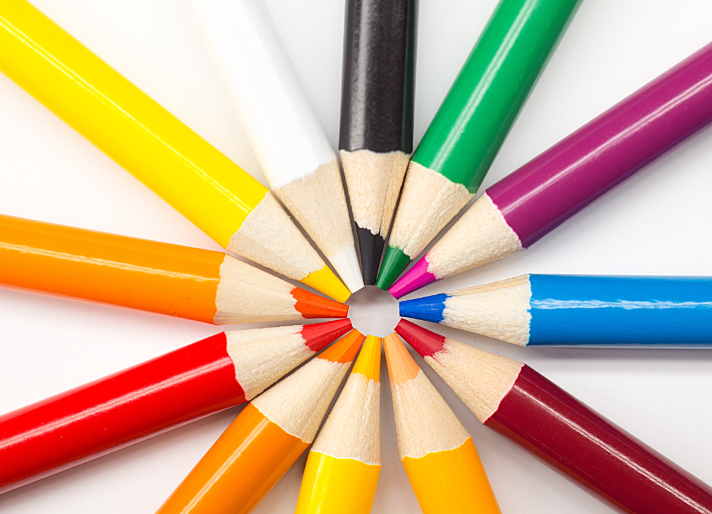Graphic design is an ever-evolving field, blending creativity with technical skills to communicate ideas and messages. At the heart of this creative process lies a fundamental element – the line. Lines in graphic design are more than mere strokes; they are the building blocks that form the basis of design. This article dives into the intricate world of graphic design lines, exploring their definition, significance, and versatile applications.
Defining the Line
A line in graphic design refers to a visual element that is characterized by its length and direction. However, it is not limited to being a mere stroke; it possesses distinct attributes that make it a versatile and expressive component of design. Graphic designers use lines in various forms, such as straight or curved, thick or thin, solid or broken, to achieve specific design goals.
Key Attributes of Lines in Graphic Design
Let’s break down the key attributes that define a line in graphic design:
- Shape: Lines can take various shapes, ranging from simple straight lines to intricate curves. The shape of a line plays a crucial role in determining its visual impact;
- Thickness: The thickness of a line is a significant factor in conveying its strength and delicacy. Thick lines tend to appear robust and bold, while thin lines exude delicacy and elegance;
- Texture: Lines can simulate textures within a design. Smooth lines contribute to a modern and sleek feel, while rough or jagged lines can add a rustic or handmade touch;
- Direction: The direction of a line is instrumental in creating a sense of movement and emotion within a design. Different line directions convey distinct feelings, with horizontal lines suggesting calmness, vertical lines evoking strength, and diagonal lines conveying dynamism;
- Continuity: Lines can be continuous or broken, and this attribute affects their visual impact. Continuous lines often provide stability and unity, while broken lines can add an element of disruption or movement.
The Role of Lines
Lines play a pivotal role in graphic design, serving multiple functions that contribute to the overall composition and message of a design. Let’s explore the primary roles of lines:
- Direction and Movement: Lines guide the viewer’s eye through a design, creating a sense of direction and movement. They can lead the viewer’s gaze from one point to another, ensuring a logical flow of information within a layout;
- Texture and Depth: Different line qualities, such as thickness and texture, can be used to simulate textures and suggest depth in a design. For example, a series of closely spaced, thin lines can mimic the texture of a fine fabric, while bold, overlapping lines can create the illusion of depth in a three-dimensional object;
- Structure and Form: Lines are instrumental in outlining shapes and contributing to the overall structure of a design. They define the edges of objects, create boundaries, and give form to abstract concepts;
- Emotion and Tone: The nature of a line can evoke different emotions and set the tone for a design. For instance, a graceful and flowing curve can convey elegance and sophistication, while a bold and sharp stroke can communicate strength and power.
Practical Applications of Lines in Graphic Design
Graphic designers leverage the versatility of lines in various aspects of their work. Here are some practical applications of lines in graphic design:
- Logo Design: Lines are essential in crafting memorable logos. They are used to form shapes, impart brand identity, and convey the essence of a company or product;
- Web and App Design: In web and app design, lines are employed to create well-defined layouts, improve navigation, and enhance the overall user experience. They play a crucial role in organizing content and guiding users through interfaces;
- Typography: Lines are integral to typography, where they contribute to the legibility and aesthetics of typefaces. Letterforms themselves are composed of lines, and line spacing (kerning and leading) is critical for readability;
- Illustration: Line art is a popular style in illustration where lines are the primary means of expression. Artists use lines to depict characters, objects, and intricate details, creating visually captivating artwork.
The Impact of Line Variation

Line variation is a powerful tool that brings diversity and nuance to graphic design. Designers can manipulate various aspects of lines to achieve specific effects. Consider the following aspects of line variation:
- Thickness: Thicker lines suggest strength, stability, and prominence. They can be used to emphasize important elements within a design, such as headlines or focal points;
- Texture: The texture of lines can significantly influence the overall feel of a design. Smooth, clean lines convey modernity and sophistication, while rough, textured lines add character and a sense of tactility;
- Direction: Different line directions evoke distinct emotions and visual effects. Horizontal lines often imply tranquility and balance, vertical lines suggest strength and stability, and diagonal lines create a dynamic and energetic atmosphere.
Integrating Lines with Other Design Elements
In graphic design, lines do not exist in isolation; they interact with other design elements to create cohesive and visually appealing compositions. Here’s how lines can be integrated with other design elements:
- Color: Lines can be combined with color to create contrast, harmony, and visual interest. For example, contrasting colored lines can draw attention to specific elements, while harmonious color combinations can create a balanced and unified design;
- Shapes: Lines can outline and define the shapes of objects and elements within a design. The interplay between lines and shapes can influence the overall composition and hierarchy of visual elements;
- Textures: Lines can be used to simulate textures or interact with existing textures within a design. Combining lines with textures can add depth and dimension to the visual experience;
- Negative Space: Negative space, the empty or unmarked areas of a design, interacts with lines to create balance and harmony. Lines can be strategically used to divide and organize negative space, enhancing the overall layout.
Conclusion
In graphic design, lines are more than mere strokes; they are essential elements that bind the design together, conveying emotions, creating structure, and guiding the viewer’s eye. Effectively utilized, they enable designers to create impactful and visually appealing works. Each line drawn is a crucial step in crafting a visual narrative, transforming a blank canvas into a captivating story. As designers delve deeper into the world of graphic design lines, their creative use of these fundamental elements brings their artistic visions to fruition.
FAQ
Q: How do lines affect the mood of a design?
A: The type and use of lines can significantly impact the mood. For instance, jagged lines can create a sense of chaos, while smooth, flowing lines might evoke calmness.
Q: Can lines in graphic design improve usability?
A: Absolutely. Lines can define boundaries, direct the viewer’s gaze, and organize information, improving overall usability and user experience.
Q: Are lines only used for aesthetic purposes?
A: While aesthetics are a key aspect, lines also play functional roles in guiding the eye, creating emphasis, and separating content.
Q: How do lines contribute to brand identity?
A: Lines can be a critical part of a brand’s visual identity, reflecting its values and personality. For example, a luxury brand might use sleek, thin lines for elegance.




